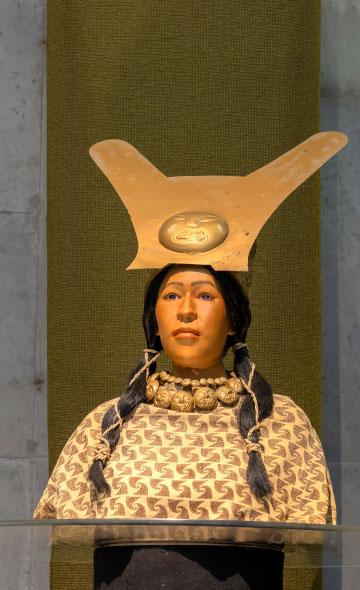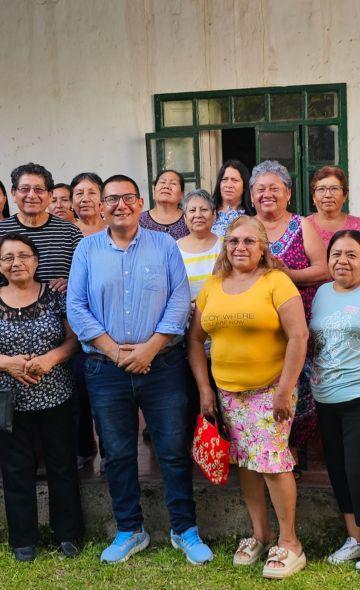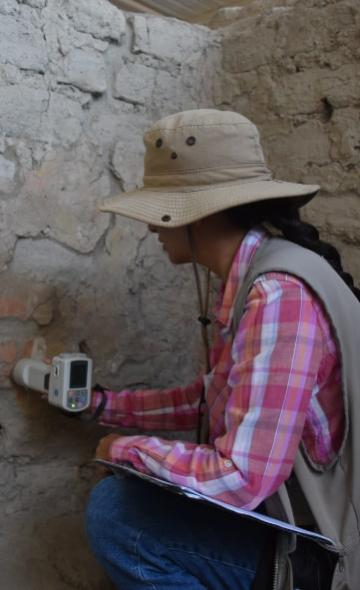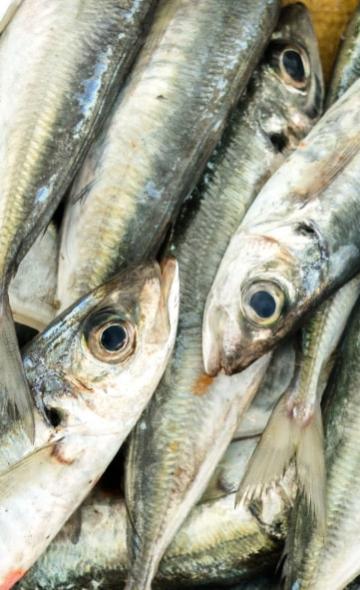- Visitors
- Researchers
- Students
- Community
- Information for the tourist
- Hours and fees
- How to get?
- Virtual tours
- Classic route
- Mystical route
- Specialized route
- Site museum
- Know the town
- Cultural Spaces
- Cao Museum
- Huaca Cao Viejo
- Huaca Prieta
- Huaca Cortada
- Ceremonial Well
- Walls
- Play at home
- Puzzle
- Trivia
- Memorize
- Crosswords
- Alphabet soup
- Crafts
- Pac-Man Moche
- Workshops and Inventory
- Micro-workshops
- Collections inventory
- News
- Students
- Architecture in the conservation of immovables: development and safeguarding of our cultural heritage
News
CategoriesSelect the category you want to see:

What is an anaco, a garment found in the funerary bundle of the Lady of Cao and in the Lambayeque funerary bundles? ...

Inauguration of the 2025 Tourism Panel Discussions in Magdalena de Cao ...
To receive new news.
Por: Complejo arqueológico El Brujo
The work of architects in Peru is fundamental for the development and progress of our society. These professionals play a crucial role in the creation of infrastructures and buildings that improve the quality of life of people and contribute to the country's economic growth.
The contribution of architects to the cultural heritage: The El Brujo Archaeological Complex
It is of great importance to mention the work of contemporary architects who, aside from designing buildings, project their work considering direct intervention in monuments. It is also appropriate to remember that the concern to preserve Peru's cultural heritage originated in the mid-twentieth century.
This not withstanding, its relevance at an international level was recognized in 1964 during the Second International Congress of Architects and Technicians of Historical Monuments, with the signing of the Venice Charter.
Furthermore, we extend our gratitude to those who contribute to the preservation of cultural heritage through restoration and conservation work. In particular, we celebrate the dedication of the Conservation of Immovables Department of the El Brujo Archaeological Complex, led by the architect Cynthia Sialer.
Sialer comments that, although there are few architects who focus on the preservation of the archaeological environment, the participation of this profile is key, as it offers different positions and perspectives regarding city planning and landscape care, among other aspects.
.jpg)
Thanks to their work, the country has seen innovative projects that not only improve infrastructure, but also boost sustainable development and community well-being.
The Legacy of the Mochica Architects: The construction of Huaca Cao Viejo
An emblematic example is their contribution to the El Brujo Archaeological Complex. Here, we can talk about the ancient pre-Hispanic architects who designed and built Huaca Cao Viejo, belonging to the Mochica culture, demonstrated an exceptional mastery of architecture and monumental art.
Huaca Cao Viejo is part of the El Brujo Archaeological Complex. This impressive site includes edifices such as the Mausoleum Enclosure, where the remains of the Lady of Cao, an important female figure of the Mochica elite, were found.
The Mochica architects used adobes, sun-dried mud blocks, as the main construction material. These adobes allowed the creation of resistant and durable structures, adapted to the arid environment of the region.
.jpg)
One of the most outstanding aspects of Huaca Cao Viejo are the marine friezes that decorate its walls, evidencing a deep knowledge of design techniques and a great aesthetic sense. These friezes depict maritime scenes, with stylized figures of fish and other sea creatures, painted with natural pigments.
In the same way, they also demonstrated their skill in planning ceremonial and funerary spaces, as seen in the Mausoleum Enclosure, which not only functioned as a tomb, but also as a place of worship and offerings. Huaca Cao Viejo and its magnificent edifices reflect the social and religious complexity of the Mochica culture, as well as their ability to transform the landscape with monuments of great cultural significance.
Students , outstanding news




